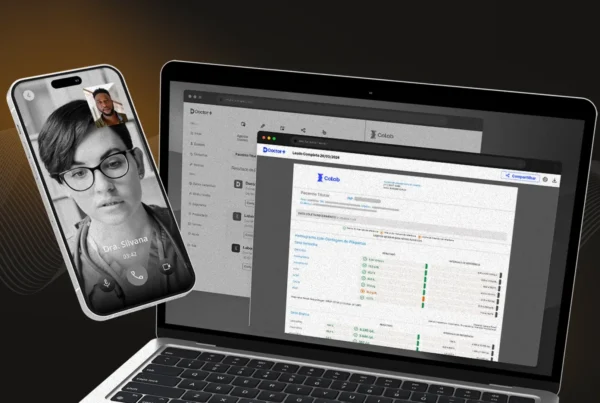Technology showed no signs of slowing down in 2022, with different components being successful among companies and end users. The arrival of 5G in Brazil, one of 2022’s technology highlights, for example, has created numerous possibilities, for both businesses and their customers.
However, 5G wasn’t the only technology that gave us something to talk about in 2022. In this post, we will look back at the solutions and trends that have stood out the most – and that will tend to maintain their presence in the coming years.
Continue reading to find out!

5G Breakthrough
July 6, 2022, made history in Brazil. On this date, Brazilians officially became 5G users when it was launched in Brasilia, the capital of the country. After that, smartphones and more modern equipment sales skyrocketed, since not all equipment can support this technology.
5G offers significantly faster data streaming – which is good for both individual users and businesses. Uploading a file through the internet becomes much faster, and it is also a starting point for businesses to increase the quality of services offered to consumers.
In addition to using this faster connection in its system, 5G also facilitates strategies such as omnichannel (integration of multiple customer interaction channels), complete digitalization of the business, Big Data maturity, and agile delivery of digital products to the consumers.
Cloud Computing
According to Gartner, in 2027, more than 50% of the companies in the world will use the cloud to accelerate their business initiatives. Cloud Computing is already a great tool, and it is projected to improve even more.
Cloud Computing can be used by companies of different segments and sizes since its characteristics benefit any business. The ability to quickly save files, consult them easily, and protect valuable documents through a backup routine, among others, explain its success.
The COVID-19 pandemic, which accelerated the home office trend, made the cloud even more essential in 2022. After all, with the use of technology, people can access files from anywhere- they only need an internet connection.
Data-driven
A few years ago, the position of data scientist was one of the most attractive positions for any professional, even for those people who did not work directly with technology and wanted to switch areas. Does this mean that this boom is over? Definitely not.
Just look at Robert Half’s 2023 Salary Guide for example, which shows that data science is still among the most profitable careers. What explains its appeal? It is simple: data is like oil for any company.
As data scientists work in extracting data from the digital environment and transforming it into relevant and useful knowledge for hiring companies, they will still be one of the most prestigious in any sector.
Thus, the data-driven culture continued to rise in 2022. Even large companies can use data from their own digital sales history or from their supply chain to optimize their productive chain and modernize their processes.
Artificial Intelligence
According to Google Startups, approximately US$ 2.4 billion were invested in Artificial Intelligence in Latin America in 2020. These investments have resulted in increasing gains for companies in terms of innovation, process automation, and the production of relevant knowledge, among others.
Some of the uses of this technology in companies are:
- in-depth analysis of consumer behavior
- identification of market movements
- investigation of competition activities
- analysis and optimization of service demands
With this series of elements provided by Artificial Intelligence, managers can make more informed decisions, as they map the data and discover patterns. Investments do not stop there: Brazilian companies have already estimated an increase of about 28% in AI spending.
Metaverse
Meta, Mark Zuckerberg’s company, has already invested US$15 billion in the metaverse since 2021. Although companies are still trying to understand how to fit into this world, the concept dominated much of the technological discussion in 2022.
A remarkable example of the use of this technology comes from Tuvalu, a small country in Polynesia, which is promoting the complete digitalization of its territory. The goal is to keep alive, in the metaverse, three main characteristics:
- territory
- sovereignty
- culture
The idea of the country’s leaders is not only to preserve the archipelago as a paradisiacal place for tourists to visit but also to create the world’s first digital nation, that only exists in the metaverse.
This technology has gained exposure with the promise that the frontiers between real and digital would be increasingly tenuous. Thus, we can socialize, work and play video games with an avatar developed for the metaverse.
Contactless shopping
Today it is possible to buy products from a company without interacting with a salesperson, by scanning a QR Code attached to the product. The Brazilian clothing brand Renner already uses this system in its stores.
It is like what Apple has been doing for some time in its famous store in New York. Its employees act more like expert advisors than as simple salespeople.
This way, the consumer can not only buy products in a modern way but still has the option of contacting a salesperson if they have any questions or want suggestions. This ensures greater autonomy for the customer, who does not need to be afraid to enter a store and be ‘chased’ by pushy sellers, for example.
Another form of contactless payment that has become very popular is tap-to-pay. In this case, the customer simply taps the card, and it is read quickly, with no need of typing a pin. This type of transaction grew 344% in a year.
As we saw in the article, the retrospective of the technology landscape in 2022 is eclectic, as it involves so many different solutions – the use of Cloud Computing to save data and the growth of the metaverse and its increasingly modern avatars – but all of them have a fundamental factor in common to technology: constant evolution.





